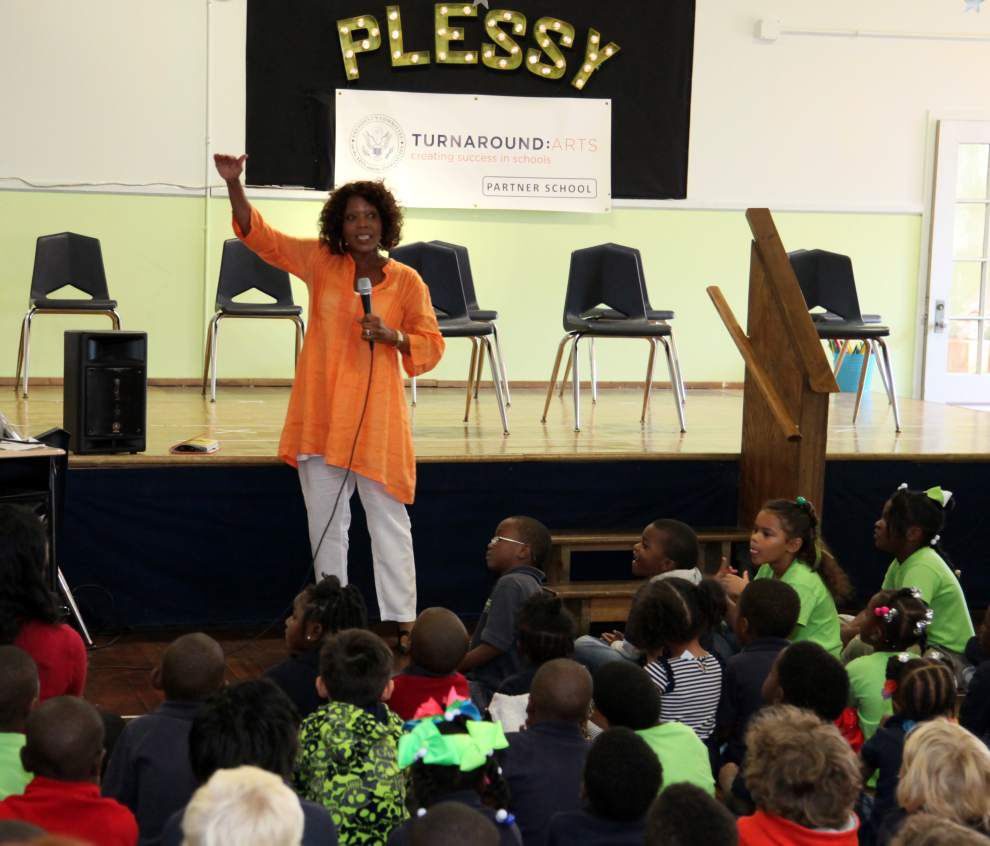A third of New Orleans students don’t get into one of their top 3 schools of choice

About a third of all students who applied to public schools in New Orleans couldn’t get one of their top choices for the coming school year, officials said Monday. It is the lowest match rate since officials launched a centralized school enrollment process in the city seven years ago.
The drop resulted at least in part from an increase in the number of applications for slots in the city’s public schools, and it has prompted renewed frustration among parents shut out of the most desirable campuses.
Notably, two schools that had handled their own enrollment until this year — Audubon Charter School in Uptown and Edward Hynes Charter School in Lakeview — plus Audubon’s new Gentilly campus joined the common enrollment system for the first time. Those schools receive far more applications than they have seats.
State Rep. Joe Bouie, D-New Orleans, who has been one of the most outspoken critics of the city’s new school system, last week asked the Legislative Auditor’s Office to review the unified application process, citing complaints to his office from parents.
On the other hand, the school officials in charge of the process, commonly known as the OneApp, said the low match rate was simply the result of high demand for the city’s most well-regarded schools.
“In New Orleans, students are assigned to schools through a process that ensures every student has a fair shot at any open seat at any school citywide,” said Kunjan Narechania, head of the state Recovery School District, which manages the OneApp.
“Every year, the number of students seeking seats at our most sought-after schools far exceeds the number of available seats.”
Under the OneApp, which was launched in 2011 to give families an easier way to apply to the city’s numerous autonomous charter schools, parents rank their top choices among dozens of public and some private schools on a single application that has one deadline.
A computer then attempts to match them to their selections. This year, nearly 17,000 families submitted applications, up from 15,000 families last year.
As a result, only 67 percent of families received either their first, second or third school choice. That’s the lowest match rate in seven years; the system usually has matched around 75 percent of families to one of their top three choices.
The chief gripe this year in the face of increased demand is that some students apparently were not admitted to schools near where they live, where they assumed they would have priority.
Bouie said many families this year were upset that they couldn’t get a spot at the new Audubon Charter School on Painters Street in Gentilly.
“Parents were saying how upset and disappointed and frustrated they were, that here is a school that is in their neighborhood, and they are still not able to get their child in that school,” Bouie said.
Bouie last week asked the state auditor’s office to look into the OneApp, a request that office will honor. The probe is expected to begin this month, Assistant Auditor Nicole Edmonson said.
The OneApp does give some preference to students who want to attend school near where they live. But the preference often applies to an area wider than a single neighborhood.
For example, a student who lives in New Orleans East might have a better shot at a school in that broad area, but not necessarily one within walking distance of their home.
The geographic preference also applies to only half of the seats within an elementary or middle school, so as not to defeat the purpose of school choice and to shut out other families who might want to attend. The preference does not apply to most high schools.
Other priorities, like a preference for siblings of children already in a school, may also trump the geographic one in some circumstances.
This year, the system worked as intended, RSD officials said, as every seat at an in-demand school that was saved under the geographic preference was filled by a student who lived within the broad area surrounding the school.
Asked whether the system tracks how often students are admitted to schools within walking distance of their homes, state Education Department spokeswoman Sydni Dunn said the RSD does not track that data but could do so in the future.
The OneApp was retooled two years ago to award more families spots in schools that were, on average, closer to where they lived, Dunn said. Despite those changes, most applicants this year and last year picked schools that were farther from their homes.
In 2016, the RSD commissioned an independent audit of the OneApp system. The firm Tembo gave the process positive marks after it examined whether school priorities were used appropriately that year and whether applicants who qualified under those priorities received a top choice before others did.
Some of the most popular schools this year, aside from Hynes and Audubon, were Alice Harte Elementary in Algiers and Benjamin Franklin Elementary in Uptown. All have A or B ratings from the state; the Orleans system’s average is a C.
At Hynes, more than 1,400 families applied for only 100 seats. About 1,100 applied for Harte’s 88 seats, and more than 1,200 asked for Franklin’s 173 seats.
The odds were actually better at Audubon’s two campuses, with about a third of applicants to its Gentilly and Uptown locations receiving spots, data show.
The Legislature is considering a bill that would require the city’s schools to reserve at least a fifth and no more than half of their seats for students who live nearby. The bill does not specify how large the geographic zone to be considered should be.